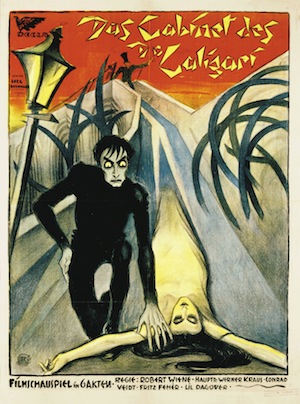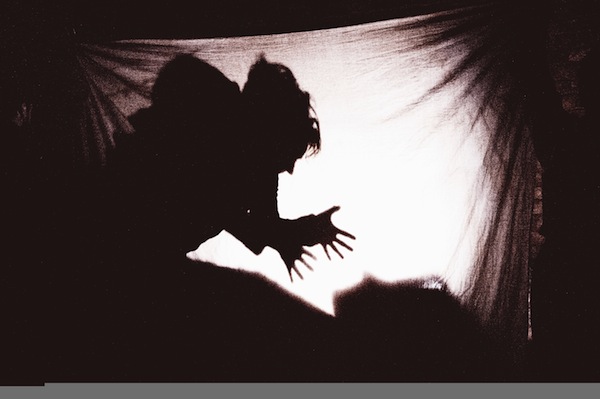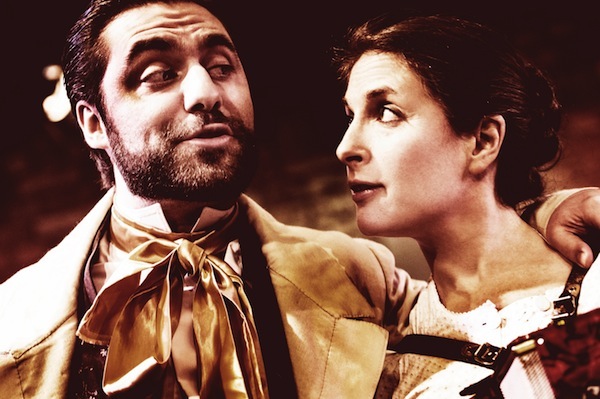As you are reading this after the 24th February you will already know which film won Best Picture at the Oscars. Sadly, however, I find myself in the unfortunate position of writing this review before the 24th and therefore have no idea which picture is actually the “Best”.
Perhaps it’s Lincoln? If so the decision was probably political. Or maybe it’s Argo? And again, if so that decision was also probably political. Ultimately I imagine any decision to name one of the nominees “the best” has to be inherently political, which is why the Awards are nonsense. As far as I’m concerned, a picture can only be “the best”, or one of the best, if it somehow manages to leave its mark on human culture, or failing that, whether it has any substantial effect on how cinema develops, and we can only know that in retrospect.
 One film I believe deserves to be dubbed “one of the best” is a little-known German expressionist picture called Das Kabinett des Dr. Caligari, or The Cabinet of Dr. Caligari. A week ago I saw a dramatic adaptation of the film, and before I go any further, and risk boring you to the point of departure with my pompous, opinionated ramblings, I urge you to go and see it too. It is a fantastic adaptation, and a brilliantly entertaining production.
One film I believe deserves to be dubbed “one of the best” is a little-known German expressionist picture called Das Kabinett des Dr. Caligari, or The Cabinet of Dr. Caligari. A week ago I saw a dramatic adaptation of the film, and before I go any further, and risk boring you to the point of departure with my pompous, opinionated ramblings, I urge you to go and see it too. It is a fantastic adaptation, and a brilliantly entertaining production.
One of the reasons why the film is one of history’s “best pictures” is because it had such a monumental effect on how cinema developed. Its eerie backdrops which paint a distorted picture of the rural German town, and its almost Kafkaesque mis-en-scene formed the starting point for a whole culture of German film-making. Directors such as Fritz Lang and Josef von Sternberg would embrace and perfect Caligari’s landmark style in films such as Metropolis, and The Scarlet Empress. This “expressionist” cinema would then ultimately engender Film Noir as the Emigre directors fled Nazism and set up shop in Hollywood. Even today the likes of Tim Burton and Jean-Pierre Jeunet continue to craft films in the canon of expressionism, and we have Caligari to thank for that.
Simple8’s theatrical adaptation of Caligari is a wonderfully innovative homage to the film. They employ “Poor Theatre” to tell the story, a theatrical style developed in the mid-20th Century and characterised by its absence of elaborate stagecraft. Ironically, this theatrical style was brought about by the cinematic movement that the Caligari film actually helped to begin. The epic set designs in films such as Fritz Lang’s Metropolis meant that the theatre could no longer maintain a sense of spectacle in its stagecraft; instead the actors themselves had to become the spectacle and inhabit both stage and character. In Simple8’s production this ironic reworking is enhanced by a lively, cheeky ensemble who revel in the irony they are creating on stage. An early example of the group’s “poor theatre” sees tragic, town hall clerk Franzis (Joseph Kloska) flicking through a series of filing cabinets played by his fellow actors. But with actors playing these cabinets, the cabinets are no longer just cabinets, they possess a life of their own, they have their own character, and so subtly enhance the sense of the uncanny in this Kafkaesque nightmare.

Christopher Doyle in The Cabinet of Dr Caligari. Photo by Idil Sukan.
The nightmare tells the story of Franzis, a downtrodden clerk in a rural German town, and his visit to a ghoulish attraction at the fair: The Cabinet of Dr. Caligari! What lies inside the Cabinet makes Franzis question the boundaries between the sleeping and sentient worlds, between the conscious and unconscious mind. When murder take place in the town, Franzis’ uncertainty about the world around him leads him to the depths of despair. It is a fantastic romp of a tale, and reflects all the Freudian, and modernist sensibilities of its time.
What’s more, the acting is for the most part faultless. Captivating performances are given by Christopher Doyle and Sargon Yelda, but Josef Kloska as Franzis is brilliant. He manages to exactly portray the quintessential modern-man; maligned and yet innocent, upstanding yet sinister, it’s almost an uncanny coincidence in itself that his real-life name is reminiscent of the Kafkaesque archetype.

Sargon Yelda and Hannah Emanuel. Photo by Idil Sukan.
If there is any criticism to be made of the play it is that it is sometimes too entertaining. Occasionally, moments of mounting tension are literally plucked out and and rendered bathetic, when they could remain ominous and disturbing. But at the same time I can understand why these talented writer/directors, Dudley Hinton and Sebastian Armesto, have included the play’s humorous turns. They make the essence of the play entertaining. The audience often titter with delight at witty one-liners or at the inherent physicality of the style; and fundamentally that is what the theatre should be about. From their firmly built platform of entertaining theatre, they can then highlight the themes which their expressionist material necessarily evoke and which are still pertinent today. The isolation of the modern man, the vulnerability of the individual at the hands of the masses, and the delicate balance between our passionate and rational selves.
In the end, of course, the brilliance of Simple8’s adaptation doesn’t just reflect the potential of this young theatrical ensemble, but also shows what makes a film a great picture. Nearly a hundred years on The Cabinet of Dr. Caligari still inspires us to ask probing questions of our society and ourselves. Now can the same be said of the film which won Best Picture?
Simple8’s production of The Cabinet of Dr Caligari runs at the Arcola Theatre, London E8, until 16th March 2013. For more information and to book tickets, visit the theatre’s website.




